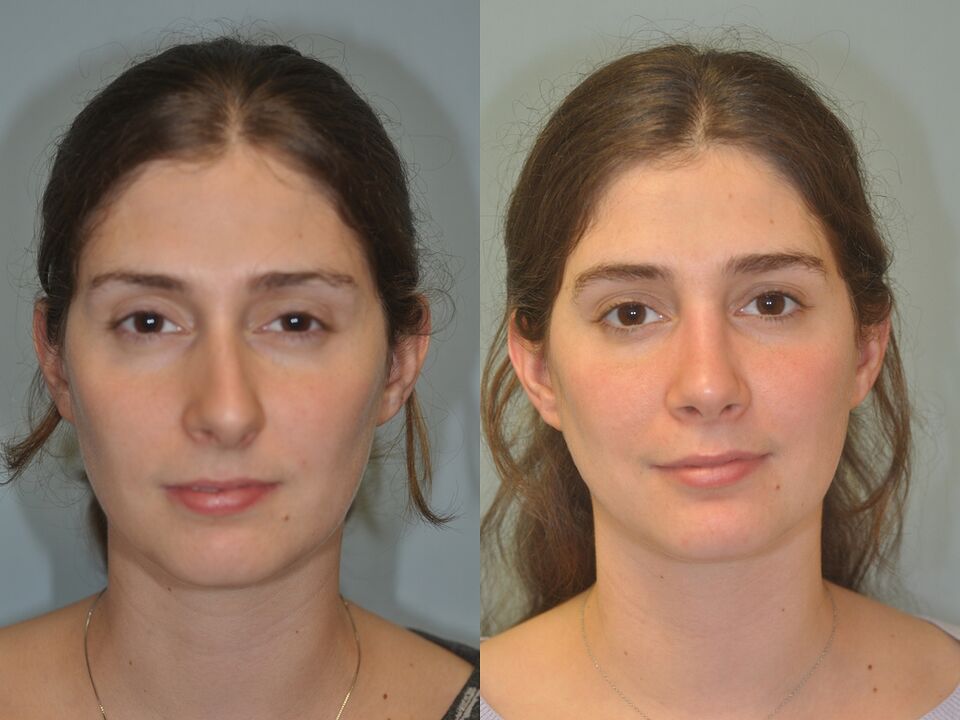
Rhinoplasty (formed from two other Greek words with the meaning of the "nose" + "plastic", it is therefore literally translated by "plastic nose") is a section of plastic surgery, which is engaged in the congenital correction (obtained at the stage of embryogenesis) and the nasal deformations acquired throughout life.In other words, it is plastic surgery to correct the external and internal faults of the nose.Distinguish open, closed and non -surgical rhinoplasty.In most cases, aesthetic and functional defects are surgically eliminated.
Initially, the correction was only carried out in relation to injuries, serious illnesses and notable congenital defects.Later, plastic surgery began to be carried out, most often, according to the aesthetic indications, in order to change the appearance of the nose.For example, remove the bump, reduce the tip, lift the bridge from the nose, reduce the nostrils and so on. A little story. For the first time, surgeons in the ancient world carried out rhinoplasty. It was mentioned in the former manuscript of "Ayurveda" dating from OK.1000 BC This document captures the majority of the facts concerning antiquity medicine.The restoration of facial units was required by wars and people mutilated in the battle during the execution of the sentence of justice.At that time, transplantation began its history.As a correction material, the skin of the cheeks or the skin in the forehead has been taken.Indian technology over time has developed so that in the Middle Ages, even European doctors, mastering it, successfully operates on patients.
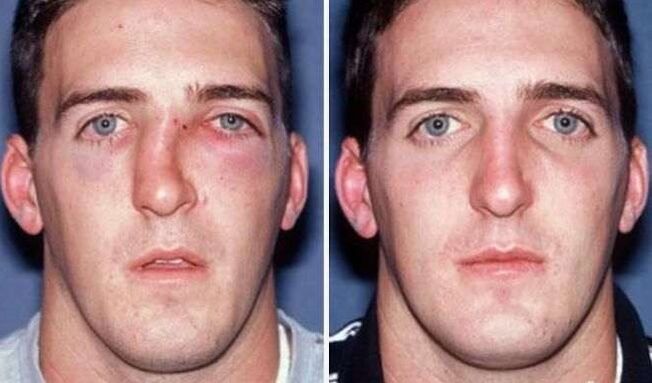
Rhinoplasty indications
Rinoplasty is made according to medical and aesthetic indications.In other words, a person does not like what the nose looks like.It can be with a bump or a curve, too large or small, wide or narrow, zero or long, with large or asymmetrical nostrils.And sometimes a person's nose has been twisted with birth or due to a blow (while it cannot often breathe and an operation is necessary to restore nasal breathing).There are frequent cases when the operation is necessary to correct appearance defects after the first unsuccessful plasticity (this is considered the most difficult surgical intervention).The operation is only authorized to people over 18 years of age (if there are no urgent medical indications).This is due to the fact that bone tissue is formed until the age of eighteen, and cartilage is even up to twenty.This is why the most suitable age for rhinoplasty from 20 to 35 years old.The following is a description of the most common problems with which men and women turn to rhinoceros surgeons.
Nose with a bump
The essence of the problem: there is a small bump on the back of the nose, because of which the nose looks more massive, and the face is gloomy and dissatisfied.Reason: the defect may be congenital, may appear after an injury, or may be the result of a previously unsuccessful correction.The elimination method: In most cases, in plastic surgery, the bump is eliminated by a closed or open method under general anesthesia.If the back of the nose is too wide, rhinoplasty must be made with osteotomy (bones rapproche)

A large back of the nose
The essence of the problem: a person has a very wide nose, which makes the face massive and rude.Reasons: a defect may appear after an injury, be congenital or become the result of an unsuccessful withdrawal from a bump.Resolution method: Open correction with osteotomy under general anesthesia.The essence of this technique is that part of the bone in the back is removed, then the lateral parts are brought together.
Nosy's nose
The essence of the problem: the back of the nose is asymmetrical.Due to the curvature, a person often cannot breathe at all.This problem refers to the functional indications of surgical correction.How a defect appears: in most cases, it is the result of a fracture.Although it happens that the nasal partition is bent due to the intensive growth of the skull bones during growth.Is it possible to straighten your nose? In most cases, an operation to equalize the partition (septoplasty) undergoes a closed method under local anesthesia.The essence of the operation is indicated in the diagram below.If this is not enough, in such cases, they resort to rinoseptoplasty (when the correction of the partition is combined with the elimination of other defects of the shape of the nose).In cases where the injury is quite serious, they use reconstructive plastic (more serious surgery, which is often carried out at several stages), this section of plastic surgery studies of the nose catering after serious injuries and in the event of complete absence.The surgeon's task in this case is the restoration of the integrity of the base of bone cherries and the skin.
The shape of a bowel of the nose
The essence of the problem: the nose is too low.Because of which, the shape of the nose looks like a profile saddle.Reason: the defect may be congenital, may appear following an injury when part of the bone or cartilage has been damaged.How can you change the situation? The correct shape is restored by transplanting a costal cartilage, the cartilage of the workshop (outside the ear) or by setting up a synthetic implant.
Nose

The essence of the problem. The nose too large (long or wide) makes the face disproportionate.Most often, in such cases, the tip is very thickened.Reason: the defect is most often congenital. How do they solve the problem? The nature of the surgical intervention depends on the cause (in some cases, it is necessary to reduce the tip of the tip, in others, the wings of the nose are reduced, but it is necessary to remove the bump).Before deciding that it is possible to ensure that plastic surgeons often use 3D computer modeling.This allows you to see before even the operation what the face will look like, after the procedure.
The shape of the point problem
The essence of the problem: the proportions of the correct face are raped due to the bad shape of the nasal tip.For example, it can be:
- Narrow
- Wide
- Round (nose with potatoes or bulbous)
- Lowered (hook)
- Raised (Kurting)
- Bifurcated
How do they solve the problem? The course of the operation is designed according to the type of problem.
- To reduce the large tip, just link the dome of the large cartilage, and in others, it is also necessary to truncate part of the cartilage fabric.
- A round glesome round should more often eliminate part of the cartilage, followed by a merger of domes, also often reduces the wings during the operation.
- The bifurcated tip of the nose must install a transplant from the patient's own cartilage fabric taken in the ear or the coast, or from synthetic material.
- The point may seem too narrow due to the disorders associated with the loss of the rigidity of the side legs of the cartilage.They are reinforced, also using transplants.
- When the point is lowered from the nose, the surgeon eliminates part of the cartilage and lifts it in seam, staring at it in a new position.
- Another operation of the operation implies the strengthening of the columelle of the nose to ensure good tip support.
- There is a third method associated with the truncation of a part of the inner muscle, after which the tip is pulled up
- Kournomability is also eliminated in several ways which involve the installation of their own transplants or synthetic in the tip of the tip or nose bridge.
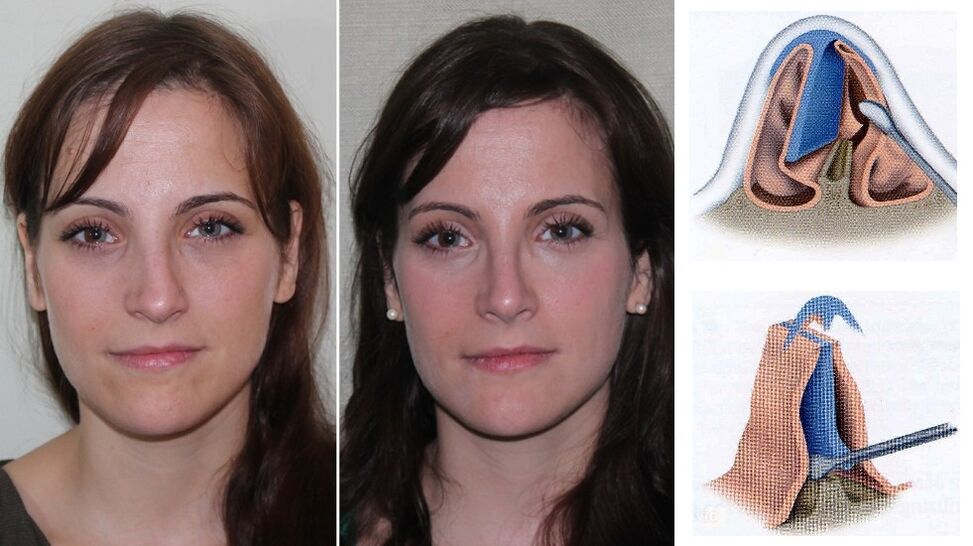
Large or different nostrils
The essence of the problem: the disproportionate size of the nostrils (too small or too large) or a significant asymmetry can disturb harmony and worsen the appearance of the face.How to eliminate the defect? The course of the operation depends on the source of the problem.They can sew the wings of the nose, it may be necessary to strengthen the domes of the cartilage of retirement, and in some cases, it is enough to align the nasal septum.It happens that it is necessary to raise or reduce the long tip of the nose
Rhinoplasty contraindications
To the absolute contraindications in which rhinoplasty should in no case be done:
- Diabetes I, Type II
- Coronary disease and other serious cardiovascular diseases in which general anesthesia is contraindicated
- Meningitis, tuberculosis, gonorrhea, brucellosis and other serious viral infectious diseases
- System diseases: Red lupus, HIV, Lepra and others.
- An allergic reaction to the components of anesthesia.
- Chronic diseases: liver cirrhosis, hepatitis, etc.
- Cancer
- Bronchial asthma
- Blood coagulation problems
- Mental illness
The relative contraindications (rhinoplasty can be carried out if the disease is healed) relates:
- Age up to 18 years old (correction is only acceptable in the most extreme cases)
- Exacerbation of inflammatory diseases (sore throat, frontal, sinusitis, average otitis)
- Ars, sras
- Skin diseases
- Age after 50 years (surgery is carried out if there are no chronic diseases linked to absolute contraindications)
- Pregnancy, lactation, menstruation
How rhinoplasty passes
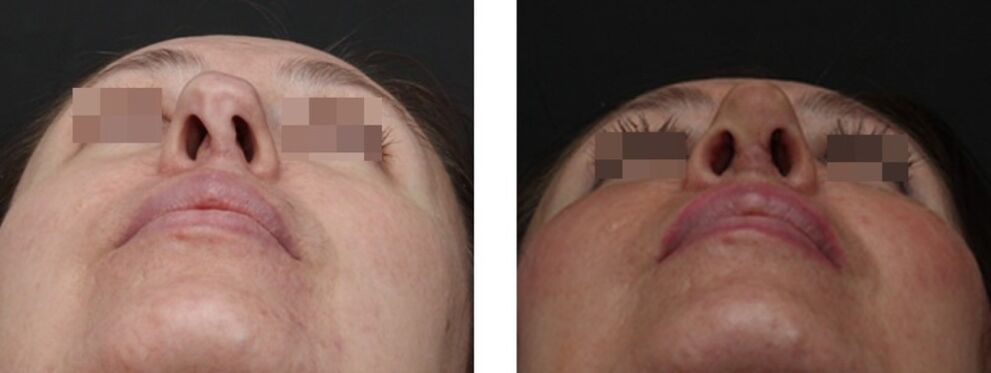
Rinoplasty is only done under general anesthesia.The duration of the procedure depends on the complexity of the surgical intervention and varies from 30 minutes to 2 hours.During the first consultation, the doctor proposes to make 3D modeling in order to obtain a complete understanding with the patient.This helps to show a person what end result can be expected.When he imagines that it turns out, it is easier for him to make a conscious choice.Before the operation, the patient must pass a general and biochemical blood test and a general urine test.It will also be necessary to pass a blood test for HIV and an analysis for blood tests for prothrombin.It will be necessary to make an electrocardiogram and take an inspection with profile doctors, if necessary.Patient preparation in the preoperative period includes the following recommendations:
Two weeks before the operation:
- Refuse to drink alcohol (especially gasified)
- Do not take blood drugs
- Not sunny
- No Smoking
A week before the procedure:
- Acquire all the necessary drugs
- Minimize the use of cosmetics
- Buy contact lenses to replace the glasses (for people with poor vision)
10 hours before the operation:
- Do not drink anything (and do not drink the minimum quantity of liquid)
- Do not use perfume and cosmetics
- Prepare clothes that don't need to be removed above your head
- Withdraw jewelry
Rehabilitation after rhinoplasty
Complete catering of fabrics after rhinoplasty occurs a year after surgery.In order to accelerate the tissue healing process and avoid the occurrence of unwanted consequences, it is extremely important to strictly observe the doctor's recommendations concerning behavior during the postoperative period.The first days after the operation, the patient is discomfort due to the fact that he must constantly wear gypsum and endure buffers in the nose.This means that you can only breathe with your nose, your mouth dries often.The temperature can be increased.I want to drink.It is difficult to wash and brush your teeth.Remove the gypsum and remove the tower from the nose earlier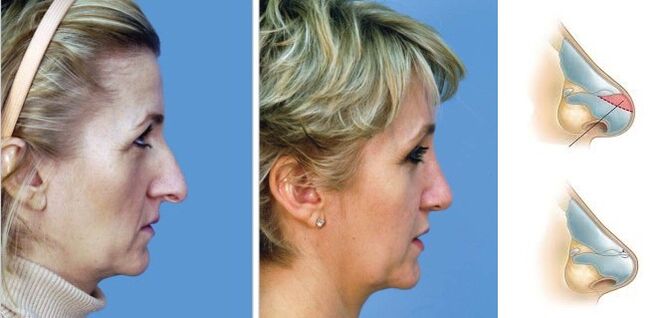 It is impossible to do it.This can cause unwanted deformations, an increase in swelling and tissue healing problems.
It is impossible to do it.This can cause unwanted deformations, an increase in swelling and tissue healing problems.
The first four five days of edema will intensify, then it will begin to disappear.To restrict the swelling, it is recommended to make cold compresses on the first day.After withdrawing the gypsum for about two weeks, people will continue to feel discomfort caused by the nose edema.Perhaps a loss of sensitivity in the field of surgery.Bruising is always visible.For the moment, breathing with your nose is already easier. During rehabilitation, in the first week, rhinoplast surgeons recommend that you join the following restrictions:
- You cannot eat too salty, spicy, acid and other, digested foods.
- You cannot tilt your head downwards, take a bath, lift weights (including taking a child or animals harder than 5 kg.) And make the charge.
- You will have to sleep only on your back, on a high pillow.
One person can go to work two weeks after surgery, but it will be necessary to avoid heavy physical work.Therefore, it is preferable to plan a vacation for this period in order to provide complete rest and rest for rapid recovery.
Within two months of rhinoplasty:
- The nasal cavity must be regularly rinsed
- You cannot be subject to a serious physical effort, play sports or go to the pool
- You can't drink alcohol
- You can't smoke
- Reduce or eliminate coffee use
- It is forbidden to visit a bathing bath or a sauna
- Avoid direct sunlight on the face
- You can't wear glasses.They affect the shape of the nose bridges, so you have to wait for the bone to heal completely.
Possible complications after rhinoplasty
It is considered a normal state so immediately after surgery, there are bruises around the eyes and swelling.They are a direct consequence of damage during small vessels surgery.After almost two weeks, primary edema and bruising should already decrease.
The first complications include the following problems:

- Bleeding
- Hematoma
- Very strong edema
- Fabric necrosis
- Wound infection
- Discovery of seams
- Standing the tip of the nose
If these problems appear, it is necessary to turn to your surgeon that is appropriate in a timely manner and to start treatment in time and to prevent their subsequent development.
Late complications include:
- Maybe the appearance of bone cors
- The formation of cheloid scars
- Opinion on Pointe du Nose
- The bifurcation of the tip of the nose
- The shape of a bowel of the nose
- The curvature of the back of the nose
- Asymmetry
- The appearance of a bump on the nose
- Perforation of the partition
- Difficult breathing
Most of the complications listed above can be eliminated using a repeated operation.Some of them appear due to surgeon's mistakes, some due to the inappropriate behavior of the patient during the recovery period, and the occurrence of some is explained by the different characteristics of the human body.




















